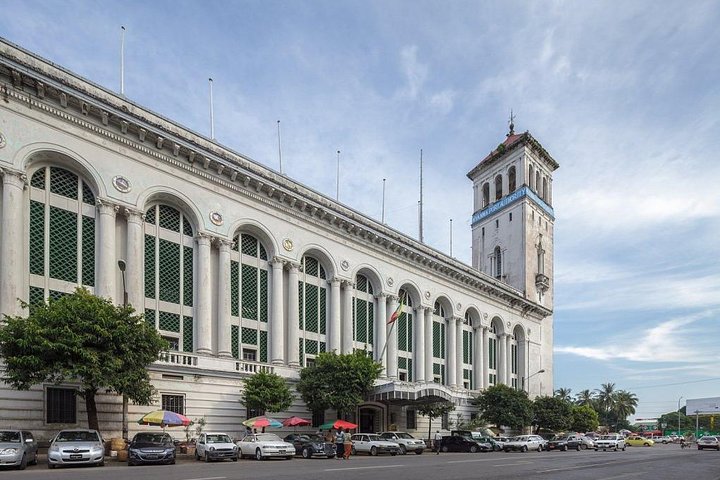Exploring Yangon’s Timeless Landmarks: A Cultural Odyssey
Drawn by the allure of Yangon’s rich cultural tapestry, I embarked on a full-day tour to explore its timeless landmarks and vibrant history. Join me as I recount my journey through this captivating city.
A Journey Through Time: Yangon City Hall and Sule Pagoda
As I embarked on the Yangon City Full-Day Tour, I was immediately drawn to the architectural marvel that is Yangon City Hall. Designed by the renowned Burmese architect U Tin, the building stands as a testament to the syncretic Burmese architecture, with its traditional tiered roofs known as pyatthat. The City Hall, completed in 1936, is not just a government building but a symbol of the city’s rich history and cultural fusion. Standing in its presence, I felt a deep connection to the past, a reminder of the colonial influences that have shaped modern Yangon.
Our next stop was the Sule Pagoda, a site steeped in legend and history. According to Burmese lore, the pagoda predates even the famous Shwedagon Pagoda, making it over 2,600 years old. As I walked around the stupa, I couldn’t help but feel the weight of its historical significance. The pagoda’s central location in downtown Yangon makes it a focal point for both spiritual and political gatherings, a place where the past and present converge in a harmonious blend.
Reflecting on Serenity: Kandawgyi Lake and Chaukhtatgyi Buddha
The tour continued to Kandawgyi Lake, also known as Royal Lake, an artificial reservoir built by the British. As the sun began to set, the lake’s calm waters mirrored the golden glow of the Shwedagon Pagoda, creating a breathtaking scene that seemed to pause time itself. On the southern side of the lake, the Shin Upagot shrine floated serenely, a reminder of the Bodhisattva who protects humans in moments of danger. This tranquil setting offered a moment of reflection, a chance to appreciate the natural beauty that complements Yangon’s urban landscape.
Chaukhtatgyi Buddha was our next destination, home to one of the most revered reclining Buddha images in Myanmar. At 66 meters long, the statue is a sight to behold, its serene expression inviting contemplation and peace. As I stood before this magnificent figure, I was reminded of the importance of mindfulness and the timeless teachings of Buddhism that continue to resonate in modern life.
A Cultural Tapestry: Shwedagon Pagoda and Bogyoke Aung San Market
No visit to Yangon would be complete without experiencing the Shwedagon Pagoda, the most sacred Buddhist site in Myanmar. Believed to house relics of the four previous Buddhas, the pagoda is a beacon of spiritual significance. As I walked around the golden stupa, I was enveloped in a sense of reverence and awe, the air filled with the soft chants of devotees. The Shwedagon Pagoda is not just a religious site; it is a living testament to the enduring faith and cultural heritage of the Burmese people.
The tour concluded at Bogyoke Aung San Market, a bustling bazaar that offers a glimpse into the vibrant local life. Known for its colonial architecture and cobblestone streets, the market is a treasure trove of Burmese handicrafts, jewelry, and art. As I wandered through the stalls, I was captivated by the array of colors and textures, each item telling a story of its own. The market is not just a place to shop; it is a cultural tapestry that weaves together the past and present, offering a unique insight into the heart of Yangon.
This full-day tour of Yangon was more than just a sightseeing excursion; it was a journey through time, a chance to immerse myself in the rich cultural heritage of Myanmar. From the architectural wonders to the spiritual sanctuaries, each stop offered a deeper understanding of the city’s unique blend of tradition and modernity. I left Yangon with a renewed appreciation for its timeless landmarks and the stories they hold, eager to share this experience with fellow travelers.











































